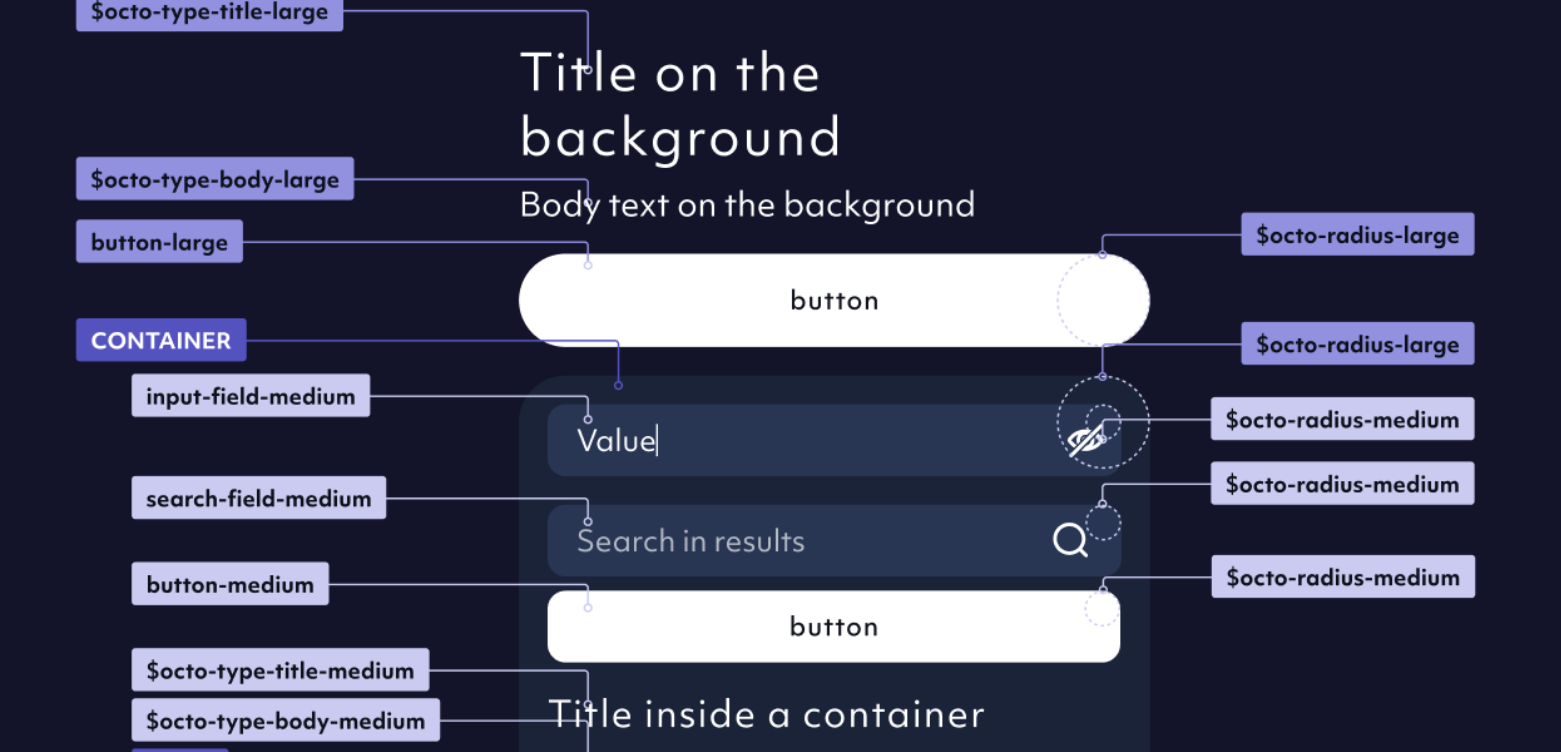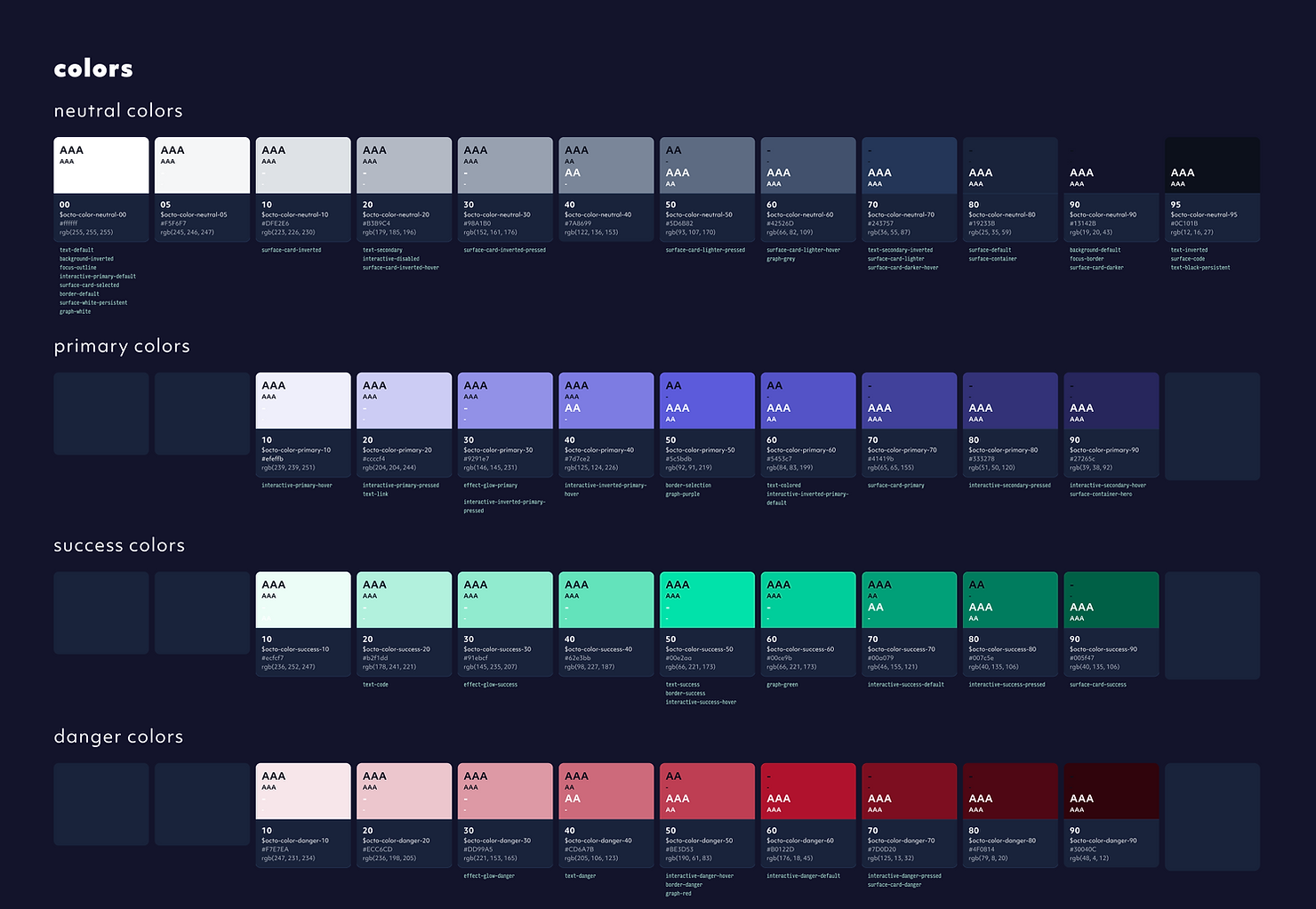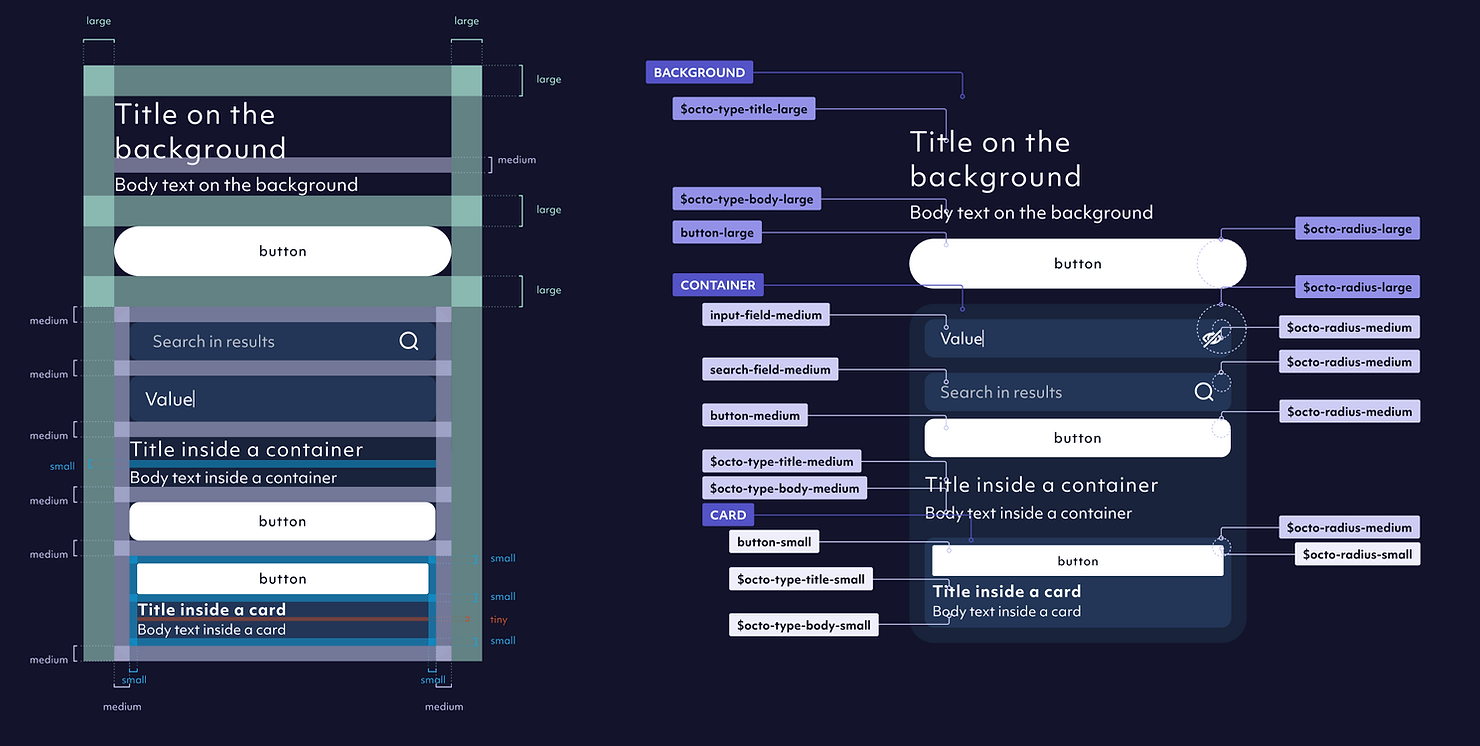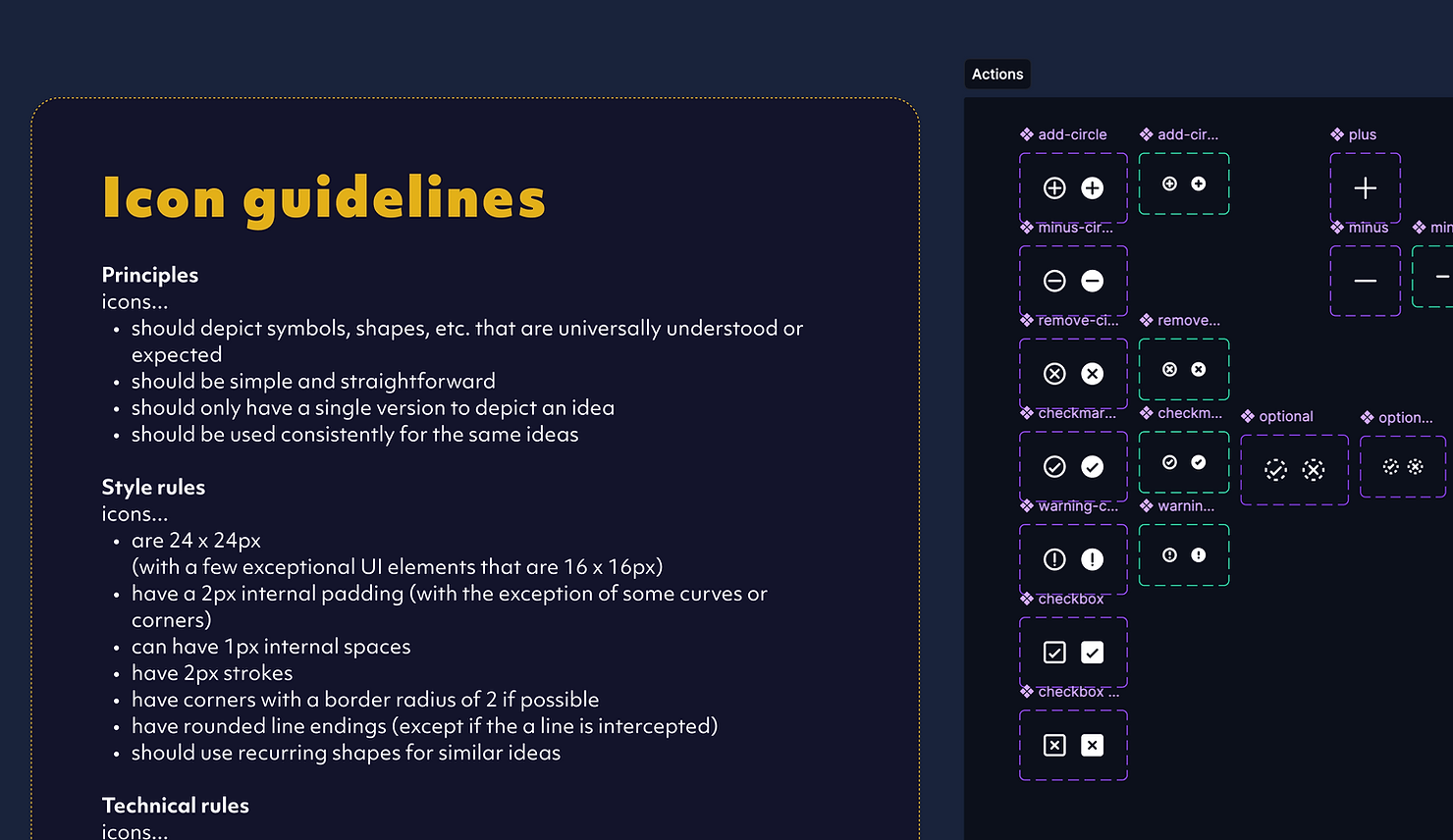
We are using cookies for secure log-in and to improve our app.
First party only, no data krakens 🦑 Learn more in our privacy policy.

Octomind is a software testing SaaS platform with fairly sophisticated UI. From the very beginning, we put effort into a good UX/UI. Design of the product was an inevitable part of it. Here are some details about how we've built our design system.
Good "how we made" stories tend to contain some kind of twist and relevation about how we came up with a new approach to design systems and failed many times, but learned from our failures and finally ended up with a better version or something. But the truth is - we knew how to build a good design system, we designed it, we built it, it worked like a charm, end of story. Here are some details about it if you are into this kind of thing:
The foundation layer contained the following tokens:
Our colors were very carefully designed not just to look good, but to be perfectly functioning as tokens.
The color tokens had two layers. Base tokens for the raw colors and functional tokens, this way they can easily updated in isolation if needed, but still only in one central place.
Some interesting mechanics that play well together:
Even if a developer randomly assigned a text style to a text on a randomly assigned background, it will always be readable in at least AA level of the WCAG accessibility standard! It was literally impossible to do less accessible UI than designed.

There were even more colors for graphs, gradients for hero items and some transparent tokens in the system as well with a similar logic as the base colors.
The hierarchy of the elements in Octo Design System was also very precisely designed so its not only easy to use, but basically dictates usage to whoever is working with it.
Typographic styles, border radiuses, effects, margins and paddings, element sizing and so on could have 3 sizes: Large, Medium or Small. From here on the logic was simple:
These rules not only helped us create a hierarchy that makes sense to our users, but also prevented us from making unsatisfactory solutions:
Once again it was impossible to design or develop something that didn't meet our predefined standards.

An additional visual eye-candy that I absolutely loved was that the size of border radiuses and their parent components' internal paddings were synchronized in a way that elements nested in each other always had the same centerpoint for the circular shape that defined their border radius (see octo-radius-small and octo-radius medium on the picture above). Not only this looked nice, but if something was nested in the wrong element, it was very easy to spot even for someone who is not so design-savvy.
Nothing extravagant here, our components followed the same sizing (L-M-S) and were hosted in Storybook where devs could try them out before using them.

Our next step was to create component-combinations or patterns that were commoly used groups of components.

Icos are mostly part of the Branding topic, but from a design system perspective an interesting quality of life feature we created was the automatic syncing of the icons from Figma to our repo without any manual work. Ok, a little manual work, there was a sync button in GitHub that you needed to press.
Of course this meant that whatever was in Figma got into the app directly - we had a some mechanics to avoid large failures, but a lot of discpline was needed from the design side, therefore we wrote down some rules.

A design system is one of the smartest investments you can make when building a SaaS product. It keeps your product consistent, cohesive, and fast to build. Instead of designers and developers reinventing buttons, colors, and layouts every time, everyone works from the same playbook. That means fewer design inconsistencies, faster releases, and a smoother experience for users. It also keeps your brand recognizable and your interface predictable - two things that quietly build trust and make your product feel polished.
As your SaaS grows, a design system becomes even more valuable. It scales with you, making it easy to update visuals, maintain accessibility, and roll out new features without breaking the experience. It gives your team leverage -you move faster and spend less time fixing small UI issues. In short: a good design system helps you build better software, faster, and keeps chaos at bay as your product evolves.
.webp)